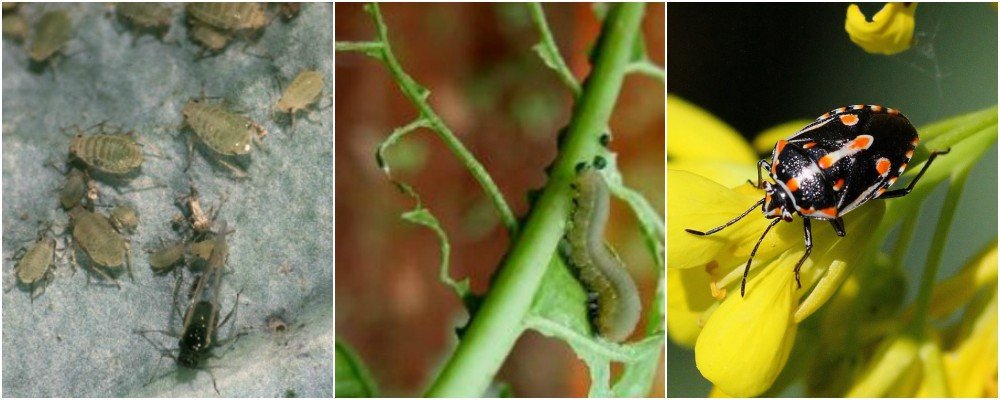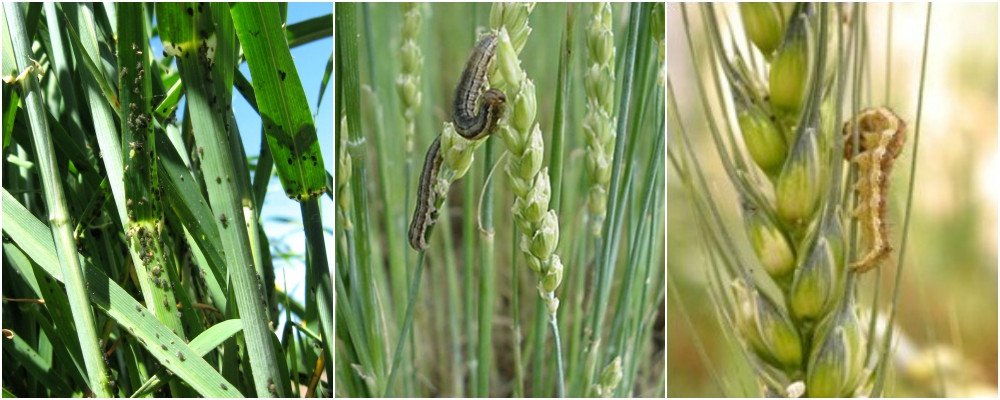Wheat Diseases
Dec 22, 2022
Plant Protection - Diseases

Yellow or Stripe Rust (Puccinia striiformis)
Symptoms:
- Yellow powdery pustules on leaves, contain yellow to orange - yellow urediospores, usually form narrow stripes on the leaves.
- Pustules also can be found on leaf sheaths, necks, and glumes.
Management / Control:
- Grow rust resistant varieties.
- Don’t grow unrecommended varieties especially in sub mountainous areas.
- Do not sow the crop in the month of October particularly in the disease prone sub mountainous areas.
- Monitor the crop from 2nd week of December onward particularly after irrigation or rain to locate the initial foci of infection.
- Spray the crop with 200 gm Tebuconazole 25 WG or 120 gm Trifloxystrobin + Tebuconazole 75 WG or 200 ml Azoxystobin + Cyproconazole 25.5 SC or 200 ml Pyraclostrobin + Epoxiconazole 18.3 SE or 200 ml Aazoxystrobin + Tebuconazole 320 SC or 200 ml Propiconazole 25 EC in 200 litres of water per acre as soon as the disease is noticed.
- Initially only spot application surrounding infected area should be done.
- Regularly monitor the crop and repeat the spray as per need.
Brown or Leaf Rust (Puccinia triticina)
Symptoms:
- Round, orange powdery pustules, contain urediospores, irregularly arranged or in clusters on leaves, less common on the leaf sheath and stalk.
- The postules are circular or slightly elliptical, smaller than those of stem rust, usually do not coalesce.
- Infection sites primarily are found on the upper surfaces of leaves and leaf sheaths and occasionally on the neck and awns.
Management / Control:
- Grow rust resistant wheat varieties.
- Spray the crop with 200 ml Propiconazole 25% EC in 200 lit. of water/acre as soon as the disease is noticed.
Stem Rust (Puccinia graminis)
Symptom:
- Pustules (containing masses of urediospores) are dark reddish brow. occur on both sides of the leaves, on the stems, and on the spikes.
- Pustules are usually separate and scattered, heavy infections -coalesce.
- Prior to pustule formation, "flecks" may appear. Before the spore masses break through the epidermis, the infection sites feel rough to the touch.
- As the spore masses break through, the surface tissues take on a ragged and torn appearance.
Management / Control:
- Grow rust resistant wheat varieties.
- Spray the crop with Plantavax @ 0.2% or Mancozeb @ 2 gm/lit of water for minimising rust infestation as soon as the disease is noticed.
Karnal bunt (Neovossia indica):
Symptoms:
- Disease development is favored by cool, humid conditions at time of heading.
- Symptoms are evident only on the grains. In the ear head only few grains are infected.
- The infected grains on pressing give out black powder of spore mass. This powder gives peculiar stinking smell.
- The infected spike lets may flare up the glumes to expose the bunted grains.
- Symptoms may include reduction in the length of ears and number of spikelets, brown blotches on kernels, premature grain drop, and stunting of plants. However, symptoms are most readily detected on seed.
Management / Control:
- Grow resistant varieties.
- A single spray of 200 ml Propiconazole 25 EC per acre using 200 lit. of water at ear emergence stage for the control of Karnal bunt is recommended in wheat meant for seed production only.







